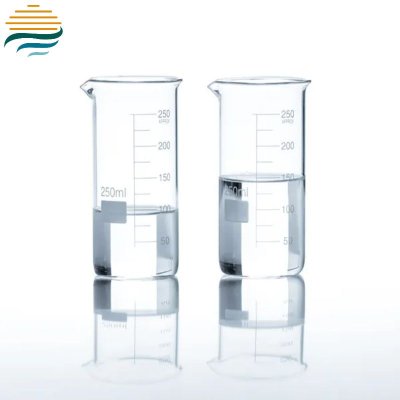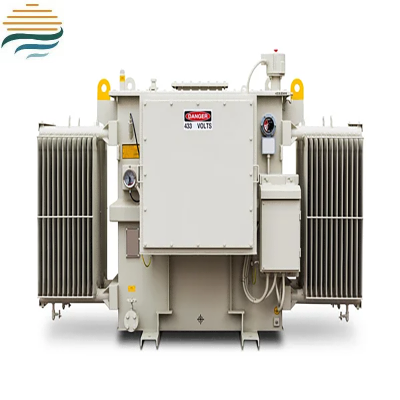What are the Two Types of Transformer Oil?
In the realm of power transformers, the choice of transformer oil is of utmost importance as it plays a pivotal role in ensuring the efficient and reliable operation of these crucial electrical devices. Transformer oil serves multiple functions, such as providing electrical insulation, facilitating heat transfer for cooling, and quenching electrical arcs in case of faults. Among the various types available, two commonly used types are mineral oil and synthetic ester oil.
Mineral Oil
1. Composition and Source
Mineral oil is derived from crude oil through a series of refining processes. It consists mainly of hydrocarbons, which are long - chain molecules composed of hydrogen and carbon atoms. The refining process involves distillation, solvent extraction, and hydrotreating to remove impurities and unwanted components, resulting in a high - quality insulating oil.
2. Key Characteristics
· Electrical Insulation: Mineral oil offers excellent electrical insulating properties. It has a high dielectric strength, typically in the range of 60 - 70 kV/mm. This property allows it to effectively separate the electrical conductors within the transformer, preventing electrical arcing and short - circuits.
· Thermal Conductivity: It also exhibits good thermal conductivity, which enables it to efficiently transfer heat generated within the transformer to the cooling system. As the oil circulates through the transformer, it absorbs heat from the hotspots, such as the windings and the core, and dissipates it through the radiators or cooling fins.
· Viscosity: Mineral oil has an appropriate viscosity at normal operating temperatures. This viscosity allows for smooth circulation of the oil within the transformer, ensuring effective cooling. However, its viscosity can be affected by temperature changes. At lower temperatures, the viscosity increases, which may pose challenges to the oil's flow, while at higher temperatures, the viscosity decreases, potentially affecting its film - forming ability for insulation.
3. Advantages
· Cost - Effectiveness: Mineral oil is relatively inexpensive compared to some other types of transformer oils. Its wide availability and well - established refining processes contribute to its cost - competitiveness, making it a popular choice for many transformer applications, especially in large - scale power grid installations where cost is a significant factor.
· Compatibility: It has good compatibility with most transformer materials, including the insulation materials used in the windings and the metal components of the transformer tank. This compatibility reduces the risk of chemical reactions that could degrade the performance of the transformer over time.
4. Disadvantages
· Environmental Impact: Mineral oil is non - biodegradable. In the event of a spill, it can contaminate soil and water sources, causing environmental damage. This environmental concern has led to increased scrutiny and regulations in some areas regarding the use and disposal of mineral - oil - filled transformers.
· Fire Risk: Mineral oil has a relatively low fire - resistance rating. Although modern transformers are designed with safety features to mitigate fire risks, in case of a severe internal fault, the mineral oil can ignite, potentially leading to a large - scale fire.
5. Applications
Mineral oil is widely used in distribution transformers, which are commonly found in residential and commercial areas to step down high - voltage electricity for end - user consumption. It is also used in many power transformers in the transmission grid, where its cost - effectiveness and reliable performance make it a suitable choice for large - scale power transfer applications.
Synthetic Ester Oil
1. Composition and Source
Synthetic ester oil is chemically synthesized rather than being derived from natural sources like crude oil. It is typically made by reacting fatty acids with alcohols or by other chemical processes. The resulting synthetic esters have a well - defined molecular structure, which can be tailored to exhibit specific properties.
2. Key Characteristics
· High Dielectric Strength: Synthetic ester oil often has a dielectric strength comparable to or even higher than mineral oil, providing excellent electrical insulation. This makes it suitable for use in high - voltage transformers where reliable insulation is crucial.
· Thermal Stability: It has outstanding thermal stability, allowing it to operate at higher temperatures without significant degradation. This property is particularly beneficial in transformers operating under heavy loads or in high - ambient - temperature environments, as it can withstand the elevated temperatures and maintain its performance over a longer period.
· Biodegradability: One of the most significant advantages of synthetic ester oil is its high biodegradability. In the event of a spill, it can break down naturally in the environment, reducing the potential for long - term environmental damage.
3. Advantages
· Enhanced Fire Safety: Synthetic ester oil has a much higher fire - resistance rating compared to mineral oil. It has a higher flash point and auto - ignition temperature, which means it is less likely to ignite in case of an electrical fault. This property makes it a preferred choice for installations where fire safety is a major concern, such as in buildings with high occupancy or in areas near sensitive infrastructure.
· Longer Service Life: Due to its excellent thermal stability and resistance to oxidation, synthetic ester oil generally has a longer service life than mineral oil. This can result in reduced maintenance costs and fewer transformer oil replacements over the lifespan of the transformer.
4. Disadvantages
· Higher Cost: Synthetic ester oil is more expensive to produce compared to mineral oil. The complex chemical synthesis processes and the cost of raw materials contribute to its higher price. This cost factor may limit its widespread use in some cost - sensitive applications.
· Compatibility Challenges: Although synthetic ester oil is compatible with many transformer materials, there may be some compatibility issues with certain types of seals and gaskets. Careful consideration and testing are required during the design and installation of transformers using synthetic ester oil to ensure proper compatibility.
5. Applications
Synthetic ester oil is increasingly being used in high - voltage transformers in urban areas, where fire safety and environmental concerns are more prominent. It is also used in transformers installed in industrial facilities where the operating conditions are harsh, and the longer service life of the oil can provide significant cost savings in the long run.
In conclusion, mineral oil and synthetic ester oil are two important types of transformer oils, each with its own set of characteristics, advantages, and disadvantages. The choice between the two depends on various factors, including the specific requirements of the transformer application, cost considerations, environmental concerns, and fire safety needs.





